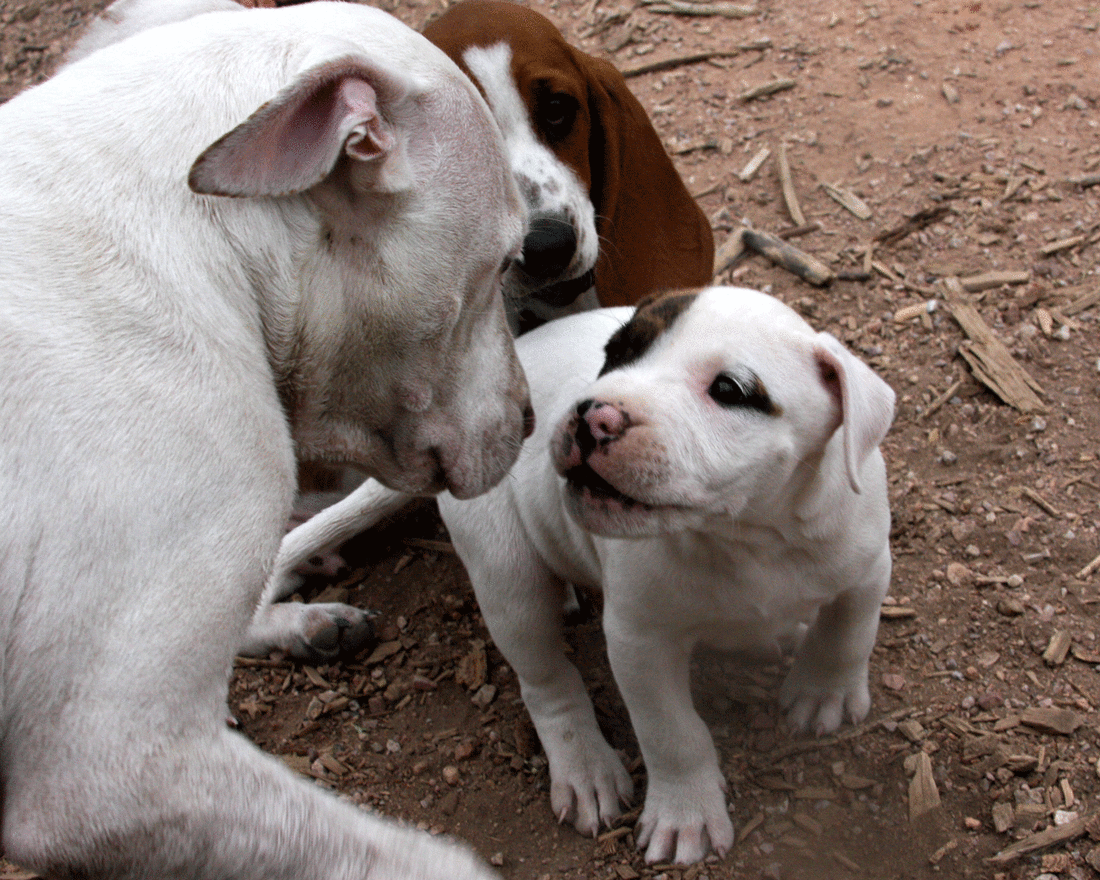Removing a Dog from a Bad Situation
Helpful FormsFeel free to download these forms and use as is, edit them to suit your needs, and/or copy and paste any portion to use in your own forms.
|
Sometimes the best answer, the only answer, is to get the dog or cat out of the home. To look the other way when you know a child or animal is being mistreated is just plain wrong. We have a responsibility to speak up for the innocent that do not have a voice. Although there are laws in place that are supposed to protect animals, it is very difficult to prove abuse or neglect unless there is death or near death of the animal being mistreated. If you come across a dog is in a bad situation, here are some guidelines that I have found useful to remove the dog from the situation.
1. Make sure the situation really is bad. Do they lack a fresh supply of water and shelter? Is the dog thin, or cowers when approached? Is the dog kept on a chained out 24/7 without ample, accessible shade? Document findings. Take photos if possible without trespassing. 2. Make sure you have offered to help improve the situation. Showing your concern for the dog and the situation first makes it easier to take the next steps. 3. Ask the owner if they are willing to surrender the dog. Don't be confrontational or accusatory! As an animal lover sometimes it's hard to be mild in the face of cruelty, but you have to rein in your passion. Point out that having a pet is a time burden and requires a lot of attention, and that maybe the dog AND person would be happier if the dog were to be rehomed. Remember, the goal is to help the dog, not to pass judgement on the owner. 4. If an owner agrees to surrender the dog, act immediately and have a preprinted contract in hand. Something as simple as X owner name, agrees to surrender X dog breed and name, to X your name. An example relinquishment form for download is available to the left. Have them sign and date. Keep the copy for proof of relinquishment. 5. Once you get a surrendered dog into your custody getting the pooch ready for a new home or foster home is next in order. It is best to already have a good 501c3 rescue group lined up that has agreed to take the pup, but most of the time, these hard working rescue groups are packed to the brim. If you can find a good foster home the chances of getting a rescue group to help are more likely. Regardless, immediately place an ID tag on the collar of the new dog with your cell number listed. If no rescue groups or shelters can help, you have your work cut out. You may need to research local behavior trainers that utilize positive training techniques if the dog needs help with manners. Be sure that vaccinations are up-to-date (ask for vet records from previous owner if possible). And prior to placement, spaying or neutering is a must! In many areas there are low cost spay & neuter options for rescued dogs and cats. Have the pooch groomed or at least provide a bath. A nice smelling dog is a lot more enticing than a smelly dog. A colorful bandana is a cute touch. 6. Finding the right match for your new rescued pup is critical. The goal is to find a loving home whose lifestyle and family members match the dogs personality, energy level, and age. Spread the word! Make a catchy bio with a cute picture and send out to everyone you know. Cross posting via email is a great way to spread the word. Another place some use but should NOT is an ad on Craigslist; however WARNING!!!!!!!!!! Please DO NOT use Craigslist. You must be very, very experienced at weeding out the bad preditors so this method is NOT recommended. Many people out there pose as the perfect home but are actually dog bunchers who sell dogs to laboratories or dog flippers that resell for profit. Others use as bait dogs or worse. Posting flyers at your local coffee shops or boutiques works well. But the best way toto find a good home is to circulate with friends or friends and relatives. NEVER GIVE A DOG AWAY FOR FREE. 7. Pre-screening is vital. Interviewing the potential adopter is important and the way you ask the questions is just as important. Use the Sample Agreement Form (to the left) as a guideline to help with your interview questions. A great question and the way it should be presented is, "Are you looking for an indoor dog or an outdoor dog?" If you say "Your dog is going to be an inside dog, RIGHT?" they will most likely agree even though they are planning to keep the rescue pooch outdoors all the time. Learning how to ask questions without giving away the correct answer is a good thing to learn. 8. Be sure to do a pre-adoption home visit! This will give you a feel for how comfortable the potential family is with having a new pooch in their home. You will also see how the family members (be sure to meet with the entire family!) interact with the pooch...loving, aloof, too rough, too stern, etc. Ask to see where the dog will sleep, stay when no one is home, check backyard for secure fencing, look for stake in ground around a mud hole (proof of a previously chained out dog), if they have other animals, look for water bowls, see how rescue dog interacts with their current dogs and cats. Do not leave the rescue dog at the home unless you are totally comfortable and have completed a contract. It is always ok to think about a decision versus making a bad decision. Possession is 9/10's of the law. Once they have the dog in their possession, it will be hard to get the dog back. 9. You need a good contract! Refer to the sample rehoming contract available for download on this page. Always include a clause allowing you to get the dog back should there be any type of breach in agreed upon care. 10. Make sure the dog stays in the home! Always leave your phone number with the new family. Let them know that you are available day or night, 24/7 if they need any help with anything. Remind them to keep the ID tags (yours and theirs) on the dog at all times. Many dogs run away once placed in a new home, because they are confused about where they belong. Call the family the next day to see how things are going. Send the dog home with the "Letter to My New Companion" available on this page for download. Schedule a follow up visit! Once an adoption is completed and the new pooch is in their loving home, remind the new family that you will plan to visit in a week or so to help with any issues they need help with. That should be included in the contract as well. | ||||||||||||||||||

